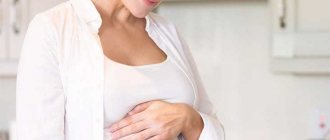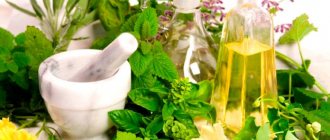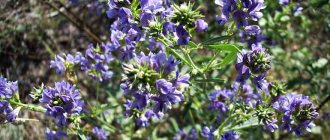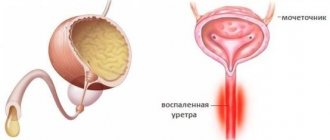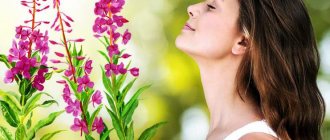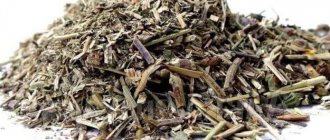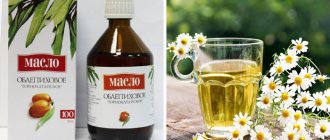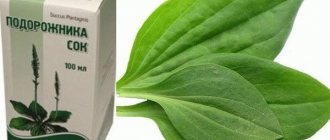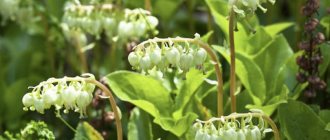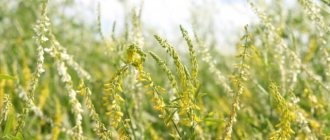Ovulation is a key process in a woman’s body that allows her to become pregnant and become a mother. In many cases, the cause of primary or secondary infertility is reduced ovarian function: the release of an egg occurs rarely and several cycles in a row occur without the release of an oocyte from the follicle.
In gynecological practice, there is a method of stimulation using hormonal drugs that “wake up” the ovaries and force the follicles and eggs to mature. But is it possible to achieve this effect at home using folk remedies? Read more about this.
Is it possible to stimulate ovulation at home?
The hormonal function of a woman, on which her fertility as a whole depends, is a subtle and complex process in which several organs are involved. These are the hypothalamus, pituitary gland (parts of the brain that produce gonadotropic hormones), as well as the ovaries, which produce estrogen and progesterone.
The thyroid gland and adrenal glands, which produce androgens and cortisol, also play an indirect role in reproductive function.
Ovulation is the process of the release of a mature egg (oocyte) into the abdominal cavity, from where it enters the lumen of the fallopian tube and moves towards the uterus towards the sperm.
This process is coordinated by hormones:
- follicle-stimulating hormone (FSH) - produced in the anterior lobe of the pituitary gland;
- luteinizing hormone (LH) - produced in the pituitary gland in response to the production of estrogen.
The so-called FSH is associated with preovulatory phase, when the dominant follicle matures in the ovary in the first half of the menstrual cycle. During maturation, the follicle reaches a size of about 20 mm, then under the influence of LH it ruptures, releasing follicular fluid containing the egg.
In place of the burst follicle, a corpus luteum is formed, which produces hormones, under the influence of which the endometrium of the uterus proliferates.
As you can see, this is a complex process that occurs naturally in healthy women, giving them a chance to become a mother almost every month. But if something in the reproductive system does not work correctly, then these processes are disrupted, making the release of the oocyte difficult or completely impossible.
Various diseases of the appendages (inflammatory processes, benign tumors, polycystic syndrome) are the main problems that reduce ovarian function. Only a doctor can eliminate them by prescribing complex treatment - taking antibiotics and anti-inflammatory drugs, vitamin and mineral complexes, hormones.
If everything is fine with the ovaries, but for some reason ovulation does not occur, the gynecologist will prescribe a hormonal examination. In the laboratory, the concentration of the main hormones (FSH, LH, estrogens, progesterone) is determined. Based on the results obtained, the doctor prescribes hormone replacement therapy. A woman takes artificial hormones that mimic hormonal function.
The body does not see the differences between “native” and synthetic hormones. Therefore, after taking hormonal drugs, the follicle begins to mature and the egg is released.
Can this be done using herbs and other folk methods?
There are controversial opinions on this matter. On the one hand, some herbs that form the basis of tinctures and decoctions can improve the general condition of the female body and normalize hormonal function.
But with serious problems that lie in dysfunction of the hypothalamic-pituitary system, as well as with organic lesions of the appendages, it is almost impossible to improve the process with herbs alone.
Stimulation of ovulation using folk remedies
To stimulate ovulation without medication, you need to seriously prepare, conduct a series of examinations and find out if there are any contraindications. You need to find out your hormonal background, determine the patency of the pipes, etc. If there are no serious deviations, then traditional medicine can offer complex herbal therapy.
Attention! Stimulate ovulation using herbs only after consulting your doctor.
Stimulating ovulation using folk remedies occurs in several stages:
- sage stimulates the formation of follicles;
- elderberry color - helps them ripen;
- plantain and rosemary - provoke active ovulation.
Afterwards, you need to take herbs that will help stabilize hormonal levels, regulate the functioning of the corpus luteum, and consolidate the fetus. This is a hog queen, a red brush and a cuff. These herbs are used in the second half of the menstrual cycle.
Herbs to stimulate ovulation
Sage
Using sage to stimulate ovulation is a fairly common method. It has earned its popularity due to the presence of a huge amount of phytoestrogens, similar to the female hormone. For proper use and good results, it is enough to know and follow the proportions of the cooking recipe.
Take 1 tbsp. l. sage herbs, pour into a thermos and pour 250 g of boiling water. Infuse for half an hour in a hermetically sealed flask. The course of treatment begins on the 5th day from the start of the menstrual cycle and lasts 10–14 days. Take tincture 1 tbsp. spoon in the morning, at lunch and in the evening. It is recommended to follow this course for 3-4 months or until the planned pregnancy, if it occurs earlier.
You can also drink fresh sage juice on an empty stomach, 1 teaspoon daily for 12 days after menstrual flow.
To enhance the effect of sage, some healers recommend adding linden blossom (1 tablespoon) to the tincture, which is saturated with a large amount of substances similar to female estrogen.
Plantain
Plantain seeds are an effective remedy for stimulating ovulation. For preparation you will need 20 g of seeds and 200 g of water. Pour water over the seeds and put on fire, let the broth boil and simmer for 5 minutes. Leave for at least 40–50 minutes, strain and take. Drink 30 g before meals. The course of treatment lasts 21 days, starting from the first day of the cycle. It is recommended to give this decoction to a man, especially if the reason for the inability to get pregnant is male infertility.
Baths with plantain for bathing women are no less effective. To prepare a decoction of plantain, take its roots (50 g) and the same amount of leaves, pour boiling water. Let it brew and add the broth to the water. The course of taking baths is up to two weeks daily.
Attention! Remember that it takes time to get results from herbal stimulation. In some cases it is 2–3 months, sometimes up to 6–7 menstrual cycles.
Rose petals
Vitamin E, which is found in large quantities in rose petals, actively affects the functioning of the ovaries. Therefore, their use will only help stimulate ovulation at home.
To prepare the decoction, take 20 g of petals (preferably fresh) and boil in a water bath. After 20 minutes, remove the broth from the heat and leave for at least one hour. Take 20 g of the strained tincture before bed every day. The course of treatment should last at least 1–2 months.
In some cases, when it is not possible to get pregnant for a long time, it is recommended that both spouses use a decoction of rose petals. A tincture of red petals is prepared for a man, and white or pink flowers for a woman.
Ramishia grass lopsided
This herb is used for many female diseases, so it can be used as a prophylactic agent in a complex for stimulating ovulation. At home, take 3 tbsp. spoons of ramishia herb, brew in two glasses of water and leave in an airtight container for 8–10 hours. Take 100 g 3 times a day after meals.
Quince
To effectively stimulate the ovaries, a woman is recommended to take quince juice. Grind the fruit and pass through a meat grinder, squeeze out the juice and drink 30 g daily for two weeks. Take a break for 7–10 days and repeat the course.
Attention! It is strictly forbidden to take any hormonal medications with herbal tinctures!
Stimulating ovulation in other ways
At home, you can easily carry out the whole range of means to stimulate ovulation. It includes not only the use of folk remedies, but also the use of mud treatments, essential oils, baths, following a special diet and taking vitamins.
Therapeutic mud
The mud treatment procedure is quite common and effective. For various female diseases, mud increases the activity of hormones, eliminates inflammatory processes and promotes pregnancy. This procedure for stimulating ovulation is especially used in cases of polycystic ovary disease.
To carry out such procedures at home, you will need to purchase mud in specialized stores or at a pharmacy. It is recommended to use a composition brought and completely ready for the procedure from the famous resort town of Saki. It is famous for its sanatoriums for the treatment of women's problems.
For convenience, therapeutic mud is produced in special tubes. Heat it until warm and apply small strokes in the area of the ovaries. Leave on for 20-30 minutes and then rinse off. You can use mud tampons, which are inserted into the vagina the day after ovulation.
Attention! A contraindication to the use of therapeutic mud may be the presence of a cyst, endometriosis, etc.
Treatment with essential oils
This method of treatment can also be classified as effective, since by inhaling the aroma of oils: sage, anise, cypress, basil, intensive production of hormones begins in the female body. You can buy an aroma medallion that you will carry with you everywhere and use it regularly.
While taking a warm bath, add a few drops of lavender oil. This helps normalize hormonal levels, relax body cells and prepare for future pregnancy.
Diet as a way to stimulate ovulation
Our grandmothers also knew that with the help of special diets it is possible to quite successfully stimulate the body to perform certain functions. Therefore, stimulation of ovarian ovulation did not bypass this method. In order for the body to begin to intensively produce estrogens, start consuming more of the following foods:
- full-fat homemade milk;
- hard cheese;
- domestic eggs;
- beans and soybeans;
- sprouted wheat grains;
- cucumbers and tomatoes;
- apples and dates;
- pomegranate;
- carrot;
- pumpkin and sesame seeds.
In addition, there is a list of foods that are not recommended for women planning pregnancy. It includes: figs, pears, cabbage, rice, etc.
Contraindications to self-stimulation
Additionally, not all herbs are healthy. There is a common misconception that herbal medicines are harmless because... this is not chemistry. But in fact, many herbs have contraindications and restrictions for use.
Firstly, any plant substances are potential allergens that can cause unpredictable reactions. Secondly, not all herbs are allowed to be taken in parallel with traditional medications.
For example, St. John's wort reduces the effectiveness of hormonal drugs, as mentioned in the instructions for use of most oral contraceptives.
Thirdly, some plants are prohibited for certain diseases, and if the herbal medicine is not selected correctly, they can aggravate the pathological process.
Herbs should not be used for:
- Inflammatory processes in the uterus and appendages.
- Polycystic ovary syndrome (PCOS).
- Obstruction of the fallopian tubes.
- Benign tumors of the uterus and appendages.
- Hormonal imbalance.
- Infertility of unknown pathogenesis.
If a woman decides to stimulate ovulation using folk remedies, she must make sure that she has no contraindications for health reasons. Ideally, she should not have problems with reproductive function, and she uses herbal remedies to speed up the process of conception. In some cases, herbal medicines are taken to influence the gender of the child or even the birth of twins.
When is ovulation stimulation used?
Only the attending physician should prescribe the procedure. And only in situations where it is really necessary. After all, if a woman has a stable menstrual cycle and can get pregnant on her own, then the need for an appointment disappears on its own.
Ovulation in a girl whose body is completely ready for pregnancy and childbirth is the period when an egg is released for fertilization by a sperm. She enters the fallopian tube, where she waits for the partner’s reproductive cell for 24 hours (the duration of her life). As a rule, one female cell takes part in ovulation. Although sometimes in practice there are cases of the participation of two or even three eggs. If fertilization is successful, twins are born.
If you do not ovulate for 6 menstrual cycles or more, and you want to give birth, then stimulation is necessary.
Restoration of ovulation is prescribed for:
- Infertility of unknown origin (unexplained even after a full examination of both partners);
- Preparation for in vitro fertilization;
- Anovulatory infertility;
How to stimulate ovulation with herbs
Herbal stimulation is based on the use of special herbal preparations containing phytoestrogens. These are natural analogues of female sex hormones that improve the general condition of the reproductive system and increase the likelihood of conception in the next cycle.
Let's look at the most common drugs.
Sage
This is one of the main medicinal herbs beneficial for women. Sage contains a large amount of phytoestrogens that can cause a reaction from the pituitary gland and increase the production of luteinizing hormone.
Sage is taken as follows: 25 g of dry matter is poured into a glass of hot water, left for 25 minutes and filtered. Drink the resulting decoction, starting from days 5 to 21 of the menstrual cycle, 45 ml four times a day.
Plantain
This herb also contains a large amount of phytohormones that can stimulate ovulation. To prepare the medicine, take plantain seeds - 25 g of dry matter per 1 cup of boiling water. The seeds are boiled in a water bath for 3 minutes, then cooled for 50 minutes. Take 40 ml three times a day.
Rose petals
Rose contains a large amount of tocopherol - vitamin E, which is called the reproductive hormone for both women and men.
Tocopherol has a beneficial effect on the ovaries, which in the current cycle can “wake up” and release an egg. To do this, pour 30 g of fresh petals into a glass of hot water, simmer in a water bath for 10 minutes and leave for an hour. The decoction is taken once a day before bedtime, 15 ml.
Ramishia grass lopsided
Ramishia unilateral (ortilia, mother) is one of the most effective herbs against infertility and diseases of the genitourinary system. A decoction is prepared on its basis: take 2 tbsp. dry matter per 250 ml of boiled water, leave for 2-4 hours and take 1/3 cup twice a day.
For infertility, it is used together with wintergreen and wintergreen - drink the tincture three times a day before meals for six months, except during menstruation, taking a seven-day break every three weeks.
Quince
It is believed that quince is beneficial for the female body: it normalizes the menstrual cycle and restores reproductive function. To do this, use both the juice of fresh fruits and a decoction of dried quince (20 grams, pour 250 ml of boiling water, leave for 20 minutes), which is taken 50 ml 5 times a day.
In this video you can learn more about herbs useful for female infertility:
Stimulation of ovulation using medicinal herbs
Some herbs help to “replenish” the missing amount of hormones in the female body necessary for the maturation of the egg. However, some herbs can harm the body. To know what to treat, you need to know what needs to be treated. To choose the right stimulation regimen with herbs, the doctor must carefully study the patient’s test results.
Sage
Traditional healers speak of sage as the main “female” doctor.
Sage contains estrogen, which is similar in composition to the female hormone. Herbal decoctions promote the maturation of the dominant follicle and the production of estrogen. Taking the medicinal herb begins on the 7th day of the cycle.
Dried leaves are used for decoction. Add one tablespoon to a glass and pour boiling water over it. It will be more effective to infuse the broth in a thermos, leaving it there until the morning. The resulting liquid is drunk 3 times a day, 1 tablespoon before meals, for 3 months. You definitely need to take a break during your period. Stop taking the herb if pregnancy occurs.
You can also use freshly squeezed juice from the leaves of the plant to stimulate ovulation. Drink one tablespoon of the resulting liquid once a day before meals. The course begins on days 6-7 of the cycle and lasts no more than 12 days.
Find more sage recipes here.
Stimulation of ovulation by the hog uterus
If the result of a hormone test shows a lack of progesterone in a woman’s body, then the uterus will be an effective way to increase the level of this hormone. The infusion is prepared in the same way as sage. The only difference is the beginning of the course. You need to take boron uterus from the middle of the cycle.
You will find even more recipes with boron uterus here.
Treatment with plantain
It turns out that in order to stimulate ovulation with plantain, it is not necessary to apply it to the stomach; a decoction is made from it.
Plantain decoctions are also considered an effective remedy used to normalize hormone levels. The infusion is prepared as follows: take 20 g of seeds, place them in 250 ml of cold water and bring to a boil. The seeds should be boiled for 2-3 minutes, and then the resulting liquid should be allowed to brew and strain. The decoction is taken from day 1 of the cycle 3-4 times a day before meals. Course - 3 weeks.
Aloe for ovulation
Large leaves of the plant are cut off, washed thoroughly and put in the refrigerator for several days. Afterwards, the juice is squeezed out of the leaves, and a remedy is prepared for oral administration by mixing the resulting liquid with honey and butter. Before taking, add 1 tsp. slightly warmed milk. The product is taken 2 times a day.
Red brush decoction for ovulation
Red brush is considered one of the effective regulators of hormone levels. It is prescribed for problems with the thyroid gland. The plant helps improve metabolism and well-being in women. A decoction of red brush is made in the same way as from other plants. The dried herb is poured with boiling water, infused, then filtered and drunk. Despite all the advantages of folk remedies, they have many contraindications. Be sure to check the side effects before use.
Stimulation of ovulation with medicinal herbs is prohibited if:
- the woman has an individual intolerance to the chosen remedy;
- there is an inflammatory process in the appendages;
- there are adhesions in the fallopian tubes;
- growth of the inner layer of the uterus beyond its limits was diagnosed;
- a woman is breastfeeding;
- patient over 40 years old;
- pathological changes are observed in the uterus.
other methods
Physiotherapeutic methods for treating infertility and stimulating ovulation are based on stopping the inflammatory process in the pelvic organs.
These methods are the most effective.
Therapeutic mud
Mud treatments are considered healing for women who want to conceive a child. Mud from natural sources has a stimulating effect upon contact with the body.
Ideally, these should be full-fledged mud baths in natural conditions (for example, at the Dead Sea). But you can use pharmaceutical dry preparations based on mineral mud, which are diluted with water and applied to the lower abdomen.
Essential oils
Aromatherapy is one of the ancient methods of treating female infertility, although the effectiveness of the method has not been proven by modern science. According to adherents of herbal medicine, the most effective for reproductive function are the essential oils of sage, lavender, rose, anise, basil, and cypress. Add oils to a warm bath or to the aroma lamp liquid.
Diet
Normalizing the diet and eating natural foods rich in vitamins and microelements automatically improves a woman’s reproductive function.
It is recommended to include foods rich in vitamin E in your daily diet:
- nuts (almonds, hazelnuts, walnuts, cashews);
- vegetable oils (sunflower, flaxseed, olive, corn);
- wheat germ;
- sunflower seeds;
- dried apricots;
- sea buckthorn;
- spinach;
- Rye bread;
- butter.
These foods contain large amounts of tocopherol, whose name in Greek means “one who gives birth.”
How effective is it?
The effectiveness of folk remedies for stimulating ovulation is a controversial issue. In medical practice, there are many cases where women became pregnant after using the above remedies.
But it is impossible to say with 100% certainty that it was traditional methods that gave the main effect: each case must be considered individually. In relatively healthy women, the use of herbal remedies can improve hormonal function and “wake up” “lazy” ovaries.
For more serious diseases - inflammatory and tumor pathologies of the uterus and appendages, hormonal disorders, polycystic disease - herbs are ineffective.

